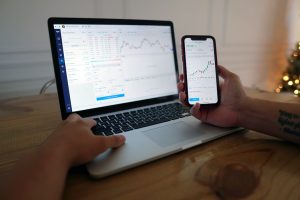The foreign exchange market, also known as the forex market, is the largest and most liquid financial market in the world. It operates 24 hours a day, five days a week, with trading sessions starting on Sunday at 5 pm Eastern Standard Time (EST) and ending on Friday at 5 pm EST. However, despite its round-the-clock operation, the forex market is not equally volatile throughout the day. In this article, we will explore which part of the day the forex market loses volatility and why.
To understand the volatility of the forex market, we need to first define what volatility means. Volatility is the degree of variation of the price of a financial instrument over a certain period. In the context of the forex market, volatility refers to the frequency and magnitude of price movements of currency pairs. A high volatility means that prices are moving rapidly and unpredictably, while a low volatility means that prices are relatively stable and predictable.
The forex market is most volatile during the overlap of the trading sessions of the major financial centers in the world. These centers are located in different time zones, which means that there are periods when two or more of them are open at the same time. The most important trading sessions are the Tokyo session, the London session, and the New York session. The Tokyo session starts at 7 pm EST and ends at 4 am EST, the London session starts at 3 am EST and ends at 12 pm EST, and the New York session starts at 8 am EST and ends at 5 pm EST.
The overlap of the London and New York sessions is the period when the forex market is the most active and volatile. This overlap occurs between 8 am EST and 12 pm EST, which is when traders in Europe and North America are active at the same time. During this period, the trading volume is the highest, and there are more market participants, which means that the market is more liquid and prices can move rapidly in either direction.
On the other hand, the forex market loses volatility during the Asian session, which is the period when the Tokyo session is active. This is because the Asian session is the least active trading session, with lower trading volume and fewer market participants. As a result, prices tend to move more slowly and predictably during this period. However, it is worth noting that some currency pairs, such as the USD/JPY and the AUD/USD, may be more volatile during the Asian session, as they are directly affected by the Japanese and Australian economies.
Another period when the forex market loses volatility is during the lunch hour, which is the period between 12 pm EST and 2 pm EST. This is when traders in Europe and North America take a break for lunch, and the trading volume decreases. As a result, the market becomes less active, and prices tend to move more slowly and predictably.
In conclusion, the forex market is not equally volatile throughout the day. The most volatile period is during the overlap of the London and New York sessions, while the least volatile period is during the Asian session. The lunch hour is also a period when the forex market loses volatility. Understanding the volatility of the forex market is important for traders, as it can help them make informed trading decisions and manage their risk effectively.





